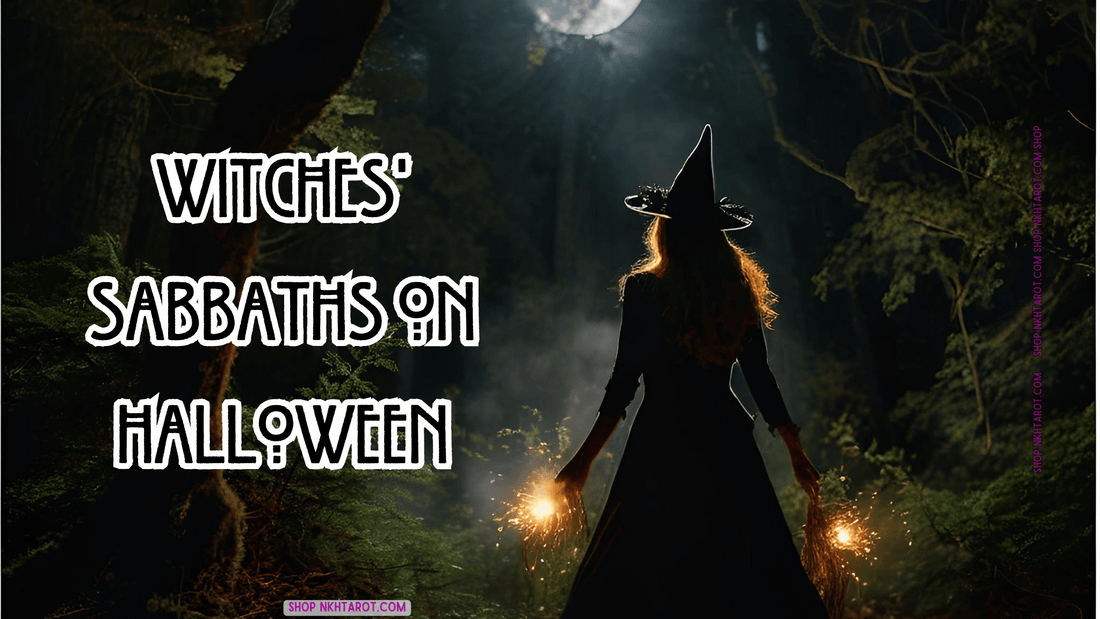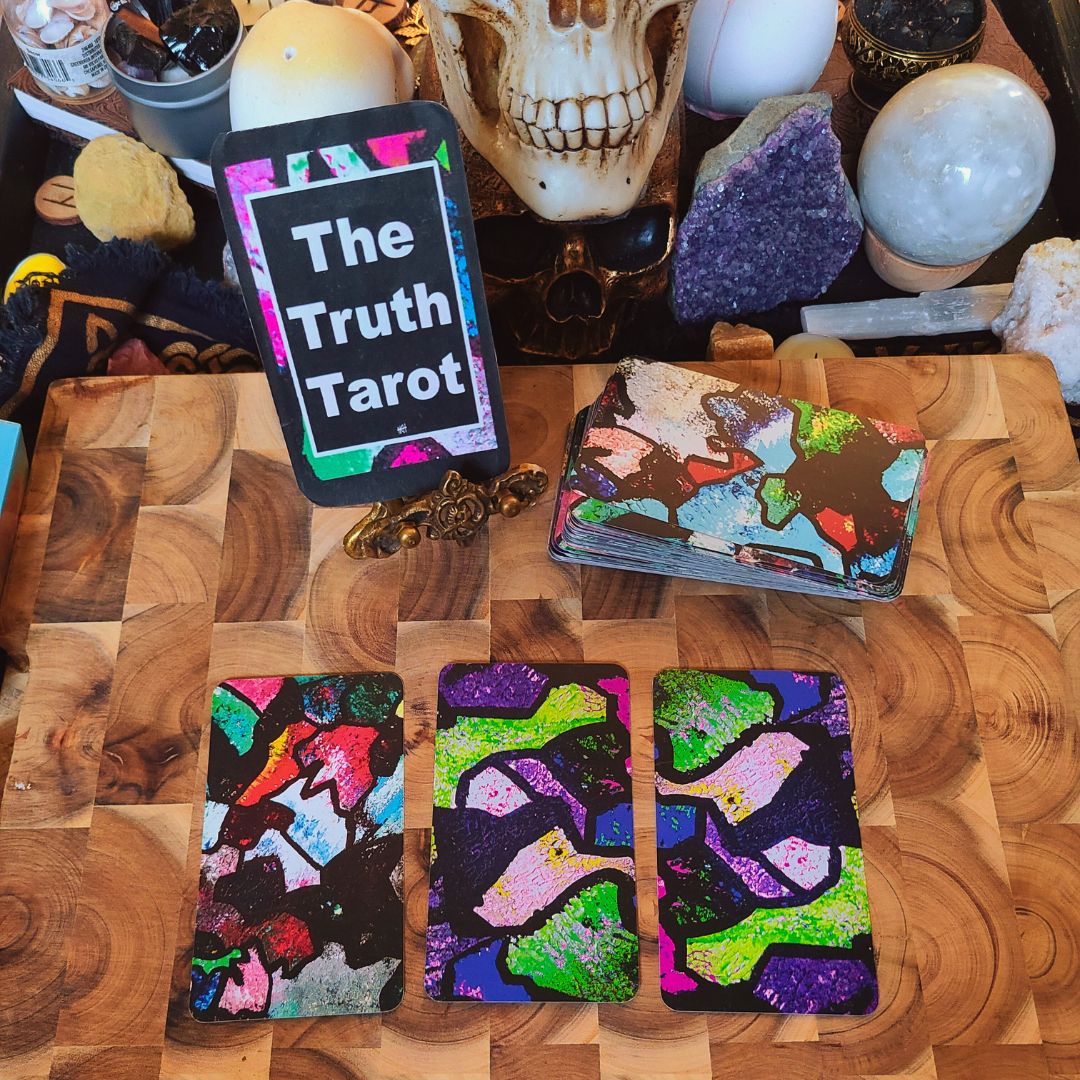
Witches' Sabbaths on Halloween: Honoring Spirits and Deities
Share
Halloween, or Samhain (pronounced sow-in), stands as one of the most powerful and mystical nights in the witch’s calendar. Rooted in ancient pagan traditions, it marks the end of the harvest season and the beginning of the darker half of the year. For witches, this night is far more than a festive occasion; it is a sacred time for rituals, spellwork, and communing with spirits. Traditionally, Witches' Sabbaths, gatherings of witches, were believed to take place during Halloween, where witches honored the dead, connected with deities, and harnessed the energies of the turning seasons.
The Historical Origins of Witches' Sabbaths on Halloween
The concept of witches gathering for Sabbaths during Halloween can be traced back to medieval European folklore. During this time, Christian authorities propagated the idea that witches met in secret on auspicious nights to perform blasphemous rituals, consort with demons, and engage in devil-worship. This image of the "Witches' Sabbath" was part of the broader witch hysteria that swept across Europe from the 15th to 18th centuries, leading to thousands of accusations, trials, and executions of those deemed witches.
However, the roots of the Witches' Sabbaths predate this persecution. In pre-Christian Europe, Halloween was known as Samhain, a major festival for the Celtic peoples. Samhain marked the end of the harvest and the beginning of winter, a time when the veil between the living and the dead was believed to be at its thinnest. During this liminal period, it was thought that spirits of the dead, both benevolent and malevolent, could pass into the mortal world.
Witches, as practitioners of folk magic, were seen as mediators between the spirit world and the human realm. This sacred role was misunderstood and demonized by Christian authorities. The gatherings that witches supposedly attended on Halloween were seen as dark and sinister, though in reality, these Sabbaths were celebrations of the natural cycles of life and death. The Witches’ Sabbath on Halloween became a powerful myth, bolstered by Christian fears of pagan traditions, but at its core, it represented a moment of honoring the spirits of the dead, nature’s cycles, and the deities that preside over life and death.
The Spiritual Significance of Halloween for Witches
For witches, Halloween represents a time of both endings and beginnings. In the Wheel of the Year, a cycle of seasonal festivals celebrated by witches and pagans, Halloween or Samhain is considered the Witches’ New Year. It is a night when the energy of the earth shifts from the expansive, outward energy of summer to the introspective, inward focus of winter. As the last of the harvest is gathered, witches honor the Crone aspect of the Goddess, who presides over death, transformation, and wisdom.
During Samhain, witches perform rituals that honor their ancestors and deities such as Hecate, the Morrigan, and Cailleach, all of whom embody the dark, transformative aspects of the divine feminine. Hecate, the ancient Greek goddess of witchcraft, is often invoked on Halloween as she is seen as a guide for those crossing between worlds. The Morrigan, the Celtic goddess of fate and war, presides over life, death, and prophecy, making her a central figure during Samhain rituals.
At the heart of these celebrations is the belief that Halloween provides a unique opportunity to connect with the spirit world. Witches use this time to commune with the dead, ask for guidance from their ancestors, and receive messages from the other side. Through divination tools such as tarot cards, runes, and scrying mirrors, witches seek insight into the coming year, often receiving profound spiritual guidance during these rituals. The energy of Samhain is also perfect for banishing rituals, letting go of what no longer serves, and preparing for personal growth during the darker months.
Rituals and Practices of the Halloween Sabbaths
While medieval folklore often portrayed the Witches' Sabbath as a chaotic, dark assembly, the reality of Halloween rituals is far more spiritual and profound. Witches may gather in covens, or practice solitary, engaging in a variety of sacred activities that honor the cycles of life and death, as well as the spirits of those who have passed on.
One of the most important rituals for many witches is the Dumb Supper. During this ritual, witches prepare a meal in silence, setting an extra place for the spirits of ancestors or loved ones who have passed away. The meal is conducted in complete quiet, with the intention of inviting the dead to join in and communicate. At the end of the meal, the food on the plate is typically left outside as an offering.
Fire rituals are another common practice during Halloween Sabbaths. Traditionally, large bonfires were lit during Samhain to ward off evil spirits and guide the dead on their journey. Today, witches might perform similar rituals by lighting candles or small fires in sacred spaces, using the flame to focus their intent. These fires are often used to burn petitions or objects that symbolize what the witch wishes to release—whether it’s bad habits, fears, or toxic relationships.
Divination is also a crucial part of the Halloween Sabbath. The thinning of the veil makes this time particularly potent for receiving messages from the spirit world. Witches use a variety of methods, from tarot readings to pendulum work, to gain insight into the future or communicate with those who have passed on. The energy of the Full Moon around this time further enhances these rituals, adding an extra layer of magic to divination and spirit work.
For those who follow a deity-based path, Halloween is a time to honor gods and goddesses connected to the underworld, death, and transformation. Offerings of wine, bread, or herbs are left on altars dedicated to deities such as Hecate, Cernunnos, the Morrigan, or Anubis. Witches may also call upon these deities to assist them in spells and rituals related to protection, release, and transformation during this time.
The Witch's Place in the Modern Halloween
In contemporary witchcraft, Halloween has become a popular night not just for witches but for those who are drawn to the mystical and occult. While the media often portrays witches as caricatures of their historical selves—black hats, broomsticks, and cauldrons—modern witches use Halloween as a time to embrace their power and spirituality. It is a night of reflection, connection, and magical workings that honors the deeper, more spiritual roots of the season.
Modern witches may celebrate the Samhain Sabbaths by gathering with like-minded individuals, conducting group rituals, or engaging in personal spellwork. They may use this time to reflect on the cycles of death and rebirth in their own lives, acknowledging the darkness while preparing for the return of the light. The night of Halloween is sacred for witches, not because of any association with malevolent forces, but because it is a time of deep spiritual connection and transformation.
#witchcraft #halloween #samhain #witchessabbath #spiritualtransformation #ancestralrituals #pagantraditions #veilbetweenworlds #cronegoddess #hecate #celticmythology #themorrigan #dumbsupper #firerituals #divination #tarot #scrying #fullmoonmagic #seasonalrituals #honoringspirits #deathandrebirth #banishingrituals #spellwork #spiritcommunication #witchtraditions #wheeloftheyear #sabbatribuals #protectionspells #ancestorworship #deityofferings #darkmoonrituals #witches

